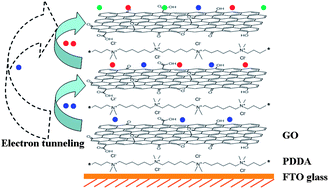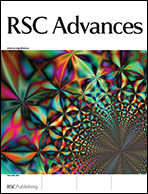Insights on the accumulation of charge carriers for enhanced electrical and photoelectric behaviors in conducting multilayer films
Abstract
Layer-by-layer (LbL) assembly provides a facile approach for fabricating organized nanoscale structures with outstanding mechanical, electrical, optical, electrochemical, and photoelectric properties. Revelation of electrical and photoelectric performance of LbL membranes made from graphene oxide would be profound for modern nanodevices. Herein, we demonstrate the LbL self-assembly of conducting [poly(diallyldimethylammonium chloride)/graphene oxide]n [(PDDA/GO)n] multilayer films with extraordinary electrical and photoelectric behaviors. The resulting multilayer films demonstrate linear growth in their bulk conductivity and maximum photocurrent density. Careful examination of the characterization and electrochemical data indicates that the fantastic effects upon the electrical conduction and photocurrent are due to the accumulation of electrons that have tunneled across PDDA from the bottom layer of GO to the top. This profound phenomenon, along with the simple fabrication method and well-defined architecture, makes these conducting multilayers promising candidates for use in electric and photovoltaic devices.


 Please wait while we load your content...
Please wait while we load your content...